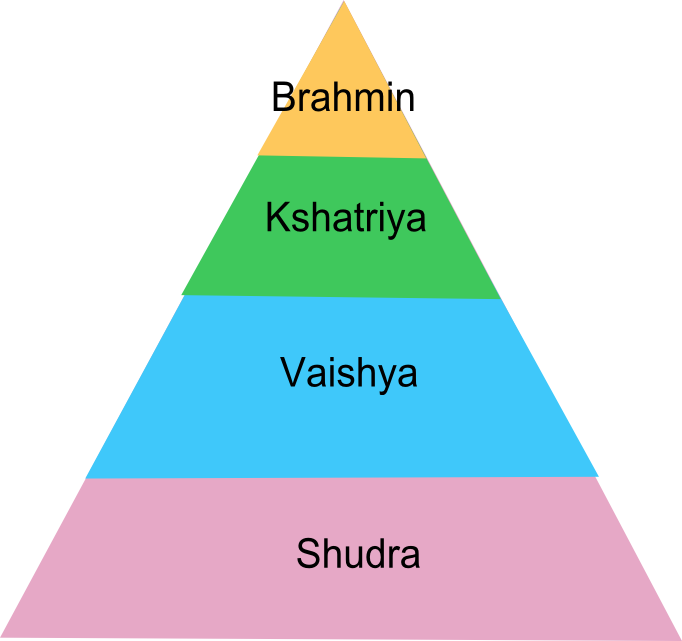Meaning of Social Stratification
A person’s gender can impact their pay and opportunities for advancement in the workplace. Women are still paid less than men for doing the same work, and they are less likely to be promoted to leadership positions.
Social stratification can help us to understand inequality and discrimination, promote social justice, and make informed decisions about public policy. It can also impact our access to resources, opportunities, and power in society.
The concept of social stratification, which refers to the way individuals and groups are arranged in a hierarchy within society based on factors like wealth, power, and prestige.
It’s like a human pyramid where people stand at different levels. So, let’s start by understanding the types of social stratification.

Definition of Social stratification
Raymond Murray: “Social stratification is a horizontal division of society into higher and lower social units”.
Pitirim A. Sorokin “Social stratification means the differentiation of a given population into hierarchically superposed classes”.
CH. Persell want to say that “Social stratification is the fairly permanent making of position in a society in terms of unequal power, prestige or privileges.”He further says that “The unequal opportunities or rewards are for people in different social positions.”
RT. Schaefer said that “Stratification, a structure ranking of entire groups of people that perpetuate unequal economic rewards and powers in a society. “
“Social stratification is the structured inequality of entire categories of people, who have different access to social rewards as a result of their status in social hierarchy.”
Ian Robertson
“Social stratification is a class division of society of permanent group position which is admitted by the superior or inferior individual of a society.”
Augburn and Nimkoff
Social stratification is group division of a society and there is difference of superiority or inferiority among the individual.”Gilbert
Types of Social Stratification
Caste
Imagine society as a giant puzzle, where each piece is assigned at birth and can’t be changed. That’s how a caste system works.
People are born into specific social groups, or castes, and these castes have different levels of status and privilege. Just like puzzle pieces can’t switch places, individuals in a caste system can’t move up or down the social ladder.
Example: In some parts of the world, like India, caste determines not only your occupation but also who you can marry and where you can live.
Class
Now think of society as a ladder with different steps. The higher you are, the more resources you have. This is the class system.
Unlike the caste system, here you have some mobility. Your social position is influenced by your money, connections, and education.
Example: If you’re born into a wealthy family, you might have access to better education and connections, giving you an advantage in climbing the social ladder.
Estate
Imagine a giant board game where your piece’s movement depends on the rules set by those in power. The estate system is a bit like that. Your legal status, often linked to land ownership, determines your place in society.
Example: In mediaeval Europe, the estate system divided society into three classes: clergy, nobility, and commoners. Each had distinct rights and privileges.
Causes of Social Stratification
Economic Inequality
Picture a pie being cut into slices. Some people get bigger slices, while others get smaller ones.
Economic inequality is like that unequal distribution of the pie. It’s when some folks have more money and resources than others.
Example: The world’s richest 1% owns more wealth than the rest of the 99% showcases extreme economic inequality.
Social Mobility
Imagine climbing a ladder that wobbles. Some people can move up, while others slip down.
Social mobility is that ladder. It’s about the ability to change your social status during your lifetime.
Example: A child from a working-class family becoming a successful doctor shows upward social mobility.
Intergenerational Transmission of Wealth
Think of wealth as a family heirloom passed down from generation to generation. Some families start the race ahead because they inherit resources.
Example: If your parents leave you a business or property, you have a head start compared to someone who starts from scratch.
Consequences of Social Stratification
Inequality
Imagine a game where some players have a head start and better tools. Inequality is similar – it’s the uneven distribution of opportunities, power, and resources.
Example: A person born in a poor neighbourhood might not have access to good schools and healthcare, creating an uneven playing field.
Discrimination
Think of a group of friends excluding someone because of their clothes. Discrimination works similarly, where people are treated unfairly based on their social status.
Example: Racism and sexism are forms of discrimination where individuals are treated unfairly due to their race or gender.
Social Conflict
Imagine two teams fighting for the last piece of pizza. Social conflict is a bit like that fight, where different groups compete for resources and power.
Example: Throughout history, revolutions and protests have often been driven by social conflict between oppressed groups and those in power.
Sociology helps us understand how these systems work and their impact on society. Remember, this is just the tip of the iceberg in the world of social stratification. It’s a complex topic with real-life implications that continue to shape our lives.
So, keep exploring and questioning, and you’ll unlock even more insights into the fascinating realm of human society.
Leave a Reply